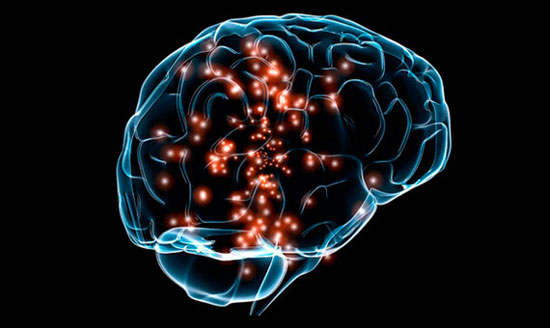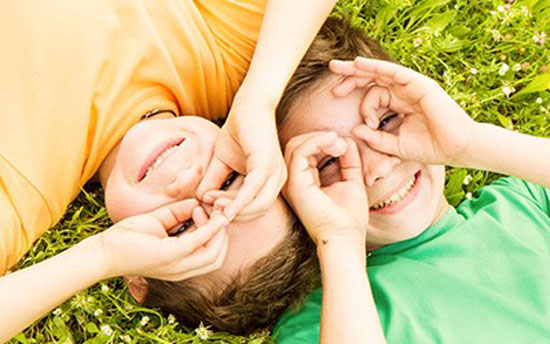The open mind
The most vivid part of the mind bubbles up through sensation and new experience when unencumbered by analytical thought
Essay by Daniel J. Siegel, clinical professor of psychiatry at the UCLA School of Medicine, founding co-director of the Mindful Awareness Research Center at UCLA

Why do novel experiences feel more intense, gritty and real?
For some 2,500 years, humans have located the mind in the brain inside our heads. But we ought to consider the origin of mind with an open mind. Is the mind truly within the brain? Or is this an illusion?
I gained some insight back in the 1980s, as college drew to a close. I was in my 20s and working in Mexico for the World Health Organization on a project to study curanderos – folk healers – in a region where the press of modernization of a local dam, La Presa Miguel Alemán, 250 miles south-east of Mexico City, was changing communities and local medical services. One morning, on a horseback journey to interview a local healer as part of my project, the saddle on my horse loosened and, with feet still strapped into the stirrups, I was dragged, they tell me, a hundred yards over gravel and rock, my head banging against the ground beneath the horse’s racing hooves. When the young and frightened horse finally came to a stop, my riding companions thought I must be dead, or at least that I’d broken my neck. I did break my teeth and nose, and damaged my arm. The head trauma induced a state of global amnesia that lasted about a day.
In the aftermath of the horse accident, I became attuned to a level of knowing beneath personal identity, personal belief and personal expectation. I had no idea what to call this change in ‘me’ so I never discussed it with anyone, putting it into a category of some existential wakeup call to lighten up, given life’s fragility following that near-death accident, to be grateful to be able to move my neck, be alive, be awake and aware. I didn’t think of it then as a gift, but I realize now it was one of those unplanned experiences that are turning points, even if we don’t realize their impact at the time.
How do all these layers of reality, these domains of life, find some common home, some common ground of understanding? Two terms that offer some insight and indicate how information is processed in our minds and brains are ‘top-down’ and ‘bottom-up’. These terms are sometimes used for the anatomical location of processing: the higher cortex (seat of executive function) at the top, the lower brainstem (heart rate, breathing) and limbic areas (emotion) at the bottom. But the same terms are also used for layers of processing not related to the anatomical distribution of up and down. Instead, they are used for the degree of processing of information.
In the view we will be using here, top-down refers to ways we have experienced things in the past and created generalized summaries or mental models, also known as schema, of those events. For example, if you’ve seen many dogs, you’ll have a general mental model or image of a generic dog. The next time you see a furry canine strolling by, your top-down processing might use that mental model to filter incoming visual input, and you won’t really see the uniqueness of this dog in front of you. You have overlaid your generalized image of ‘dog’ on top of the here-and-now perceptual stream of energy that creates the neural representation of ‘dog’. What you actually have in awareness is that amalgam of the top-down filtering of your experience.
So here, ‘top’ means that prior experience is activated, making it difficult to notice the unique and vibrant details of what is happening here and now. The top-down generalized notion of dog will shade and limit your perception of the actual animal in front of you. The benefit of top-down is that it makes your life more efficient. That’s a dog, I know what it is, I don’t need to expend any more energy than needed on insignificant, non-threatening things, so I’ll take my limited resources and apply them elsewhere. It saves time and energy, and therefore is cognitively efficient. That’s top-down processing.
On the other hand, if you’ve never seen a spiny anteater before, the first time you come across one on the trail, it will capture all of your attention, engaging your bottom-up processing so that you are seeing with beginner’s eyes. These are eyes leading to circuitry in the brain, not shaping and altering ongoing perception through the top-down filters of prior experience. You’ll be taking in as much pure sensation from eyesight as possible, without the top-down filter altering and limiting what you see now based on what you’ve seen before.
When we travel to a foreign country, bottom-up perceiving can fill our journey with a profound sense of being alive. Time seems extended, days full, and we’ve seen more details in a few hours than we might have seen in a week in our familiar life. What seen means for bottom-up perception is that we become more attentive to novelty, seeing the unique aspects of what is, literally, in front of our eyes. The social psychologist Ellen Langer at Harvard University calls this ‘mindfulness’, and has done numerous studies to reveal the health benefits of being open to the freshness of the present moment.

The novel experience of foreign travel, in contrast to the sense of dullness in our lives back home, also reminds us of what life is like in familiar terrain: top-down can dominate bottom-up and give us a familiar sense of the same-old, same-old. A street at home with just as much detail seems dull compared with the novelty of a street in a foreign town seen for the first time. This loss of attention to the familiar can be called top-down dominance. Prior learning creates top-down filters through which we screen incoming data and lose the detail of things seen for the first time.
This top-down dominance is one of the side effects, if you will, of experience and knowledge. It’s one of the downsides of expertise – we stop seeing clearly because we know so much. We know what a dog is, so let’s move on and not lose attentional energy by focusing on something we already know. We save our attentional resources for something more pressing than the familiar.
Knowledge from prior experience helps us become selective in what we perceive so we can be more efficient in allocating attentional resources and more effective and rapid in our behavioral responses. But something gets lost with that efficiency. We literally walk next to the roses and pass them by, naming them, knowing them as the flowers they are, but we don’t stop to immerse ourselves in their scents or notice their unique rainbow of colors and textures.
The mind is both embodied and relational. Energy and information flow within us as well as between us.
One general way of considering the distinction between these perception modes is that with the bottom-up we are experiencing the mind as a conduit of sensory experience, whereas in top-down we are additionally a constructor of information. A conduit enables something to flow freely, directing that flow but not changing it much; a constructor is fuelled by input and then generates its own output, a transformation that changes the fuel into another form: it constructs a new layer of representational information beyond the initial sensory stream.
The mind can be a bottom-up conduit and top-down constructor.
To help answer the question ‘Who are we?’ consider that we are at least a conduit and constructor. It might be that if only one or the other is utilized in our lives, we become blocked in our functioning. Without the constructor, we don’t learn; without the conduit, we don’t feel. Could this be an extreme constructor thing to say? My conduit mind somehow urges me to stay open about this – maybe being only a conduit is fine. But if I have put these thoughts into words, my conduit is connecting with my constructor to stand up for itself – a sign of the importance of both, don’t you think, don’t you feel? Both are important, each playing an important but distinct role in our experience of being alive. Use one without the balance of the other, and our lives become limited. Differentiate and then link the two, and we become integrated.
The mind is both embodied and relational. In our communications with one another, we often send linguistic packets of top-down words with narratives and explanations that are already constructing the reality we are sharing with another. Even when we try our best to use words to describe what we are experiencing, rather than explain what is going on, we are still using the construction of linguistic forms.
And in our brain? Energy and information flow within us as well as between us. The nervous system, including its brain, plays a major role in shaping our embodied energy-flow patterns. This is how brain research illuminates, though not with totality, what the mind is and who we are.
One recent finding is that in the brain there are two anatomically distinct circuits mediating conduit and constructor. A more lateralized (side) process involving sensory input areas includes the anterior insula (which some say is part of the ventrolateral prefrontal cortex) and the consciousness-mediating dorsolateral prefrontal cortex (the upper side area in the front of the brain, behind the forehead and above and to the side of the eyes). Notice the term lateral in each of these regions. These side circuits seem to be active when we focus primarily on moment-by-moment sensation. In contrast, we have a more centralized circuit in the brain that seems to generate thought and construct all sorts of top-down chatter about others and the self.
Sensation might be as bottom-up as we get. Since we live in a body, our within-mind experience is shaped by the physical apparatus that lets us take in energy flow from the outside world. We have our first five senses of sight, hearing, smell, taste and touch; we have our proprioceptive sense of motion; and we have our ‘interoceptive’ sense of the signals from the interior of the body. These perceptual capacities to sense the outer world and internal bodily world are built upon the physical neural machinery that enables energy to flow. Information is created with these energy patterns, generated as ions flow in and out of membranes and chemicals are released in the pathways of neural activity. As energy flows into the brain from our external sense organs, such as our eyes and ears, or from internal receptors of our body’s muscles, bones and internal organs, we move from sensation to perception – with pure sensation as close as we get to being fully present in the world.

When we assemble those bottom-up sensations into perceptions, or go even further and reflect on the meaning of a sensation or perception, associating it with thought and memory, we are utilizing the activity of a more central circuit that involves distinct areas, including midline areas of the prefrontal cortex, and regions such as the precuneus, medial and temporal lobes, lateral and inferior parietal cortex, and cingulate cortex. All this observing circuitry is a part of a brain system that neuroscientists call the default mode network, which matures during development into a cohesive, integrated whole residing at the midline front and back areas of the brain.
This circuit is called ‘default’ because when a test subject is at rest in a scanner, the network continues to fire as the baseline without the volunteer having been assigned a specific task to perform. What does this circuit involve itself with? ‘Self and others’, also known as the OATS system. In fact, some neuroscientists have suggested that elements of the default mode circuitry give rise to our sense of personal identity and might be connected to our mental health.
Studies of mindfulness meditation have pointed out that this system becomes more integrated with sustained practice. We are reflective and social beings, and it would be natural to focus on others and self as a baseline activity when we’re just hanging out with no particular assignment – even in a big blasting brain scanner. Wording the world can make us more distant still from the sensory richness that surrounds us. We then move further in a top-down mode.
Perhaps it was this OATS system that was temporarily disabled after my horse accident. Without the engagement of a more distanced constructor of this top-down circuitry, the direct sensory input of each moment at that time could then more easily fill my awareness. Without the top-down filter of prior experience and personal identity, I was literally seeing things for the first time. The lateral sensory bottom-up conduit circuit and the midline top-down constructor/observing circuit have been shown to be reciprocal in their activation: when one is turned up, the other is turned down. When my midline construction circuit was knocked offline for a day, I could experience a fuller, richer, bottom-up, sensory world through the conduit of my within-mind machinery.
Construction could have many top-down layers. One is at the level of perception, so when we see a familiar dog it is just a dog. We literally sense the visual input of the dog but do not perceive that input with any great detail of awareness. We can also have the experience of observing at a distance, having the experience of ‘Dan is seeing a dog. How interesting for him. Let’s move on’. Such observation with the presence of an ‘observer’ – in this case, Dan – might be just the beginning of the OATS activity. Now there is a personal identity that indicates who is doing the seeing. Once I actively link autobiographical and factual memory together with linguistic forms, top-down has become the active constructor, and the OATS activity is off to the races.
We are now observing, not sensing. Such observation can then give rise to a well-defined witness – we witness an event from an even more distant stance. Language emerges from this observational flow, and wording the world can make us more distant still from the sensory richness that surrounds us. We then move further in a top-down mode to narrating what we are witnessing and observing. This is how we OWN an experience, as we observe, witness, and narrate an event – and become far more distant than if we were simply immersed in the sensory bottom-up flow of our conduit circuitry in the present moment. This is the balance we live day-by-day, moment-by-moment, between top-down and bottom-up, conduit and constructor.
The experience of living in the moment is potent and profound – and one longstanding hypothesis holds that it bubbles up from an ultra-thin layer of the upper brain. Vernon Mountcastle and other neuroscientists noted decades ago that the flow of energy in the cortex, the highest part of the brain, was bidirectional. Movement was through the cortex’s vertical columns, most of which are six cell-layers deep. The highest layer is labelled number one; the lowest is labelled six.
Folded over and over itself, the cortex appears thick, but six layers of cells is actually quite thin, like six playing cards laid on top of one another. The cortex serves to make neural ‘maps’ of the world – taking in our sensory input of sight and sound and building larger maps, finally constructing our conceptual thoughts about self and other – OATS.
Imagine the possibility, yet-to-be verified, that our sense of wonder, the thrill of the new, moves from the outside world through our senses to those microscopic layers – six to five to four. Travel up one more layer, and we start to parse and analyze, then add language, and reality shifts again. We humans revel in the experience the mind provides, even as its boundaries and contours remain at large.
yogaesoteric
May 23, 2017
